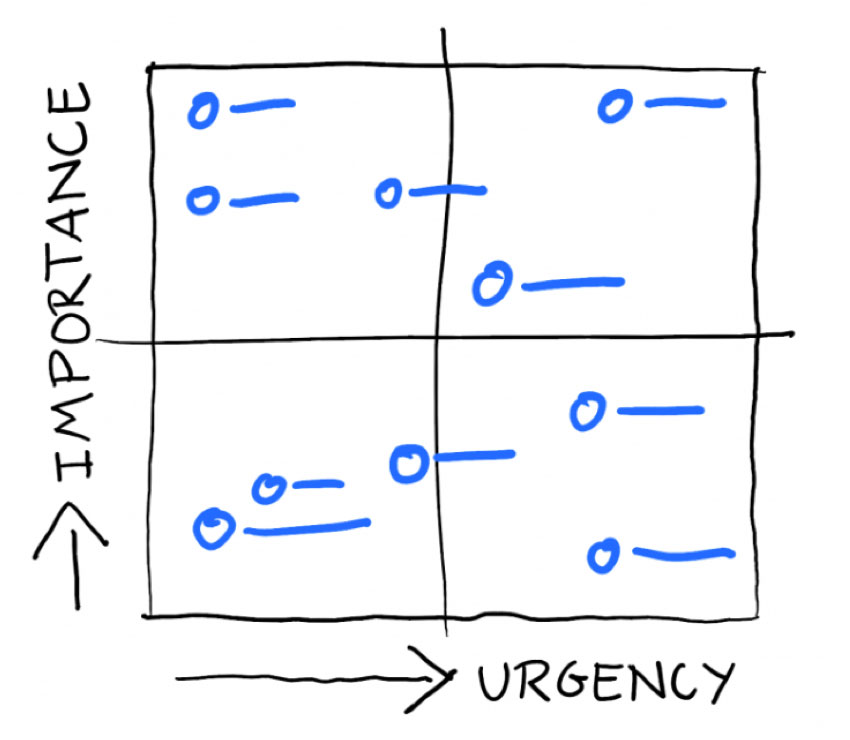
Productivity research, shared by HubSpot, revealed that distractions, health problems, and other vices cost employers in the US approximately $1.8 billion in lost productivity every year.
It’s hardly surprising considering the number of distractions we’re bombarded with on a daily basis – emails, phone calls, impromptu meetings, noisy co-workers, and the list goes on. That’s on top of lifestyle strains – like stress, insomnia, illness, and the like – that impact productivity negatively too.
As a busy leader, you also have the challenge of juggling multiple responsibilities, managing others, ensuring that deadlines are met, putting out fires, and setting a great example for your people.
It’s a tall order to say the least. So, to help you boost your productivity and encourage your team to do the same, we’ve put together a list of useful tips.
Five productivity tips to get the ball rolling (and keep it moving)
1. Enjoy a change of scenery
As we saw in one of our recent blogs, natural features play a role in enhancing our overall wellbeing, creativity, and productivity. The environment that you work in has a direct impact on your focus, happiness, engagement levels, and therefore, your ability to be productive. Something as simple as allowing for a change of scenery can encourage motivation levels and help you get more done.
In practice, this might mean introducing a flexible working policy at your organization. This setup allows you and your employees the chance to work from an inspiring setting of choice and change their scenery throughout the day.
And it seems that most people believe this will have an impact on their output. In fact, 65% of full-time employees think that a flexible and remote work schedule can increase their productivity, as HubSpot reports.
2. Focus on the priorities
As a busy leader in today’s world, it’s easy to feel overwhelmed by all of the responsibilities that make up your to-do list. You’re shifting back and forth between priorities too often and nothing gets your full attention. And, when everything you need to do seems equally important, the problem only becomes worse.
That’s where the art of prioritization comes in – and fortunately there are strategies that can help you hone this skill. But it begins with focusing on tackling the priorities, rather than getting stuck on backlogs (this will only make moving forward more difficult).
There are various methods that can be used to help you prioritize. One such framework is known as the Eisenhower Matrix.

This productivity tip helps you separate the “urgent” from the “important”. As explained on the RescueTime Blog, urgent tasks are items like emails or phone calls that you feel you need to react to immediately, whereas important tasks are ones that build into your long-term mission, values, and goals. Prioritize tasks and get things done by dividing them into the following categories:
- Urgent and important: Do these as soon as possible
- Important, but not urgent: Decide when you’ll do these and schedule them
- Urgent, but not important: Delegate these to someone else
- Neither urgent, nor important: Remove these from your schedule
As mentioned earlier, there are a number of different prioritization methods – so give a couple a try and see which one is the best way for you to focus and be productive.
Relying on a workload forecasting tool, like viUtilize, will also help you manage tasks and your people with greater insight, allowing you to prioritize accordingly and enhance the efficiency of your department.
3. Hire the best people
Establishing a team of willing individuals that you trust to delegate tasks to – a team that is motivated, engaged, and able to complete tasks efficiently – naturally boosts overall productivity and helps you accomplish more in less time.
Essentially, this starts during the “attraction” phase – by hiring the right people. There is software, like our Applicant Tracking System (ATS), that helps you handle your recruiting needs and supports you in your efforts to create a winning team.
Although there’s no one-size-fits-all pattern, there are characteristics that are very often associated with high performers – and these are great to look out for during the interview process.
Generally speaking, high performers possess a number of these qualities, as we saw in an earlier blog.
- Determined: They care about achieving quality and consistently deliver an excellent standard of work.
- Multi-talented: These individuals are innovative and often have entrepreneurial mindsets. Read more about “intrapreneurs” in another blog of ours.
- Calm under pressure: They keep a positive attitude even when the going gets tough and they’re agile, responding well to change.
- Confident in making decisions: They’re able to solve complex problems and navigate a clear path forward.
- Able to work in a team: They have excellent teamwork skills and can teach, lead and motivate others.
- Time efficient: They work in a time-efficient manner, with excellent prioritization skills.
- Open to feedback: In fact, they value and enjoy feedback. See our post on real-time feedback.
- Hungry for knowledge: They enjoy developing their knowledge and broadening their horizons.
4. Use time-management strategies
In a CNBC article, author of “Atomic Habits” and creator of the “Habits Academy” James Clear shares insight into the two-minute rule for beating procrastination and establishing new productive habits.
It’s a simple rule: starting a new habit (or getting started on one task, for that matter) shouldn’t take more than two minutes to do.
This approach to habit forming essentially encourages you to get going and to take practical steps to setting a new habit or getting a task done. For example, a concept like “run three miles” becomes “get my running shoes on,” or “prepare for the meeting” becomes “open my document.”
Another popular technique is the Pomodoro Technique, which was developed in the late 1980s by Francesco Cirillo. This technique encourages you to break down work into 25-minute intervals, separated by short breaks. It helps you to focus on the amount of time you have available (and maximize productivity within that much time) rather than trying to fight against time.
Again, it’ll mean trying out different strategies and seeing which one works best for you.
5. Work with the right technology
There are a wealth of software solutions available nowadays that help you automate repetitive tasks, save time, track time, and manage tasks in order to be more efficient and productive.
When it comes to ensuring that you and your entire workforce are well equipped to perform optimally, make sure to look to an advanced, employee-centric technology solution.
In a recent blog, we unpacked the five reasons why you should invest in this type of technology.
- It solves productivity challenges by addressing employee wellbeing, engagement, and retention
- It puts the employee experience at the center and seeks to meet their true needs
- It helps organizations give their high performers what they need to succeed (and stay!)
- It saves everyone time
- It’s online, mobile, and easy to use
Give the full blog a read here.
Inspired by these productivity tips? Get started today
Talk to us about how we can help you get things done by putting these tips into action with our advanced, employee-centric HR software.